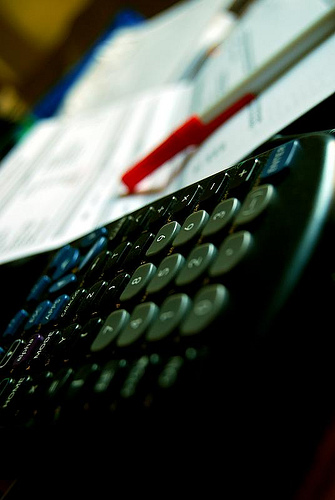 For as long as it has existed, the Internal Revenue Service (IRS) has been in a heated hunt-down for Americans who under-report income and who evade paying taxes outright. Why such a persistent effort? Consider this: for 2006, the most recent year for which data are available, the IRS collected 86% of what it was owed in taxes. That may not sound too bad, except when you realize that this works out to an estimated $385 billion shortfall- the vast majority of which came from under-reporting income.
For as long as it has existed, the Internal Revenue Service (IRS) has been in a heated hunt-down for Americans who under-report income and who evade paying taxes outright. Why such a persistent effort? Consider this: for 2006, the most recent year for which data are available, the IRS collected 86% of what it was owed in taxes. That may not sound too bad, except when you realize that this works out to an estimated $385 billion shortfall- the vast majority of which came from under-reporting income.
It was recently reported by The New York Times that one of the easiest ways to cheat on your taxes is to be the sole proprietor of a Schedule C business. The IRS knows this, but realizes as well that finding these tax cheats is not so easy.
In an effort to crack down on tax evasion and focus their auditing, the IRS conducted a survey of sole proprietors with Russell Research in the beginning of 2012. The investigators divided a representative sample of sole proprietors into those most and least likely to pay their full tax burden and then made comparisons between the two groups. The results of the study were published earlier this year, and they provide some interesting insight into which sole proprietors are most likely to be tax cheats. Here is a brief summary:
- Men were less likely than women to be tax compliant. While males made up 59 percent of the more compliant taxpayers, they composed 65 percent of the less compliant ones.
- The more employees there were, the less compliant the owners (average employment of 6.6 versus 3.6).
- Owners of professional, scientific and technical service businesses, health care and social assistance, and arts, entertainment and recreation businesses were more likely to be compliant than owners of construction, and real estate and rental and leasing businesses.
- Owners of businesses with lower sales tended to be more compliant (average sales of $47,000 versus $87,000).
- Owners of businesses with lower expenses tended to be more compliant (average expenses of $12,000 versus $50,000).
- Owners who complete their own tax returns on their own tended to be more compliant (32% percent of the more compliant sole proprietors, versus only 21% of the less compliant ones). Those in the low-compliance group also expressed less trust in tax preparers. Although most used a tax preparer, they were less likely to follow the preparer’s advice.
- People who were more cynical about the tax system, those who had more negative attitudes about the IRS, and those who were more skeptical about the value of government activity, tended to be less compliant.
- Respondents from the low compliance groups tended to be suspicious of the tax system and its fairness, whereas those from the high-compliance communities viewed government positively.
If you happen to fall into one of the groups most likely to cheat on your taxes, be warned: the IRS is stepping up its efforts to catch those who try to shake their tax obligation. This means conducting more audits specifically among these “high risk” groups. Given this, make sure you do your best to be prepared for an audit if it does come. This means making your best effort to prepare your tax documentation, staying current with the major tax laws (or hiring someone else who will), making sure your business documents are complete, clear, and accessible, and making an effort to accurately fill out your tax return forms.
